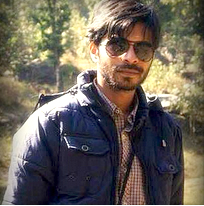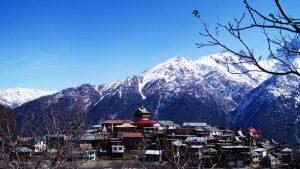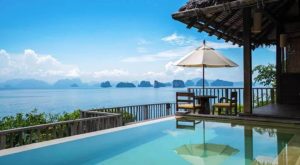Last Updated: February 20, 2025 Swairik Das
A General Overview
What draws India closer to an obscure and indifferent picture are the indigenous tribes. Far from the contemporary trend and economical development, they own their personal identity as Adivasi having their own language, religion, festivals, cuisine, dance and music. With such an enigmatic culture and hospitality they also significantly hold a contrasting patriarchal and matriarchal society.
I can’t say that for sure the total number of tribal groups in India, but after a wide research I can say that it exceeds more than 500 and comprises approximately 9% of the total population of the country. The lively tableau of the tribal community in India stretches from the remote villages tucked in the Indian Himalayan region to southern – most tip of India AND from the farthest corner of North East India to the dunes of Rajasthan. The tribal population in India covers approximately 15% of the country and the majority is found in central India.
An overview in terms of how the tribal community affects the travel and tourism industry in India
Whether you are going for a trekking tour in the Indian Himalayan region or beach holiday in Andaman, Goa or Kerala you will surely get a glimpse of some of the tribes dwelling in the region. In contrast to leisurescapers, the explorers who travel to seek the indigenous colours of India go deep into the Indian tribal chapters to capture their lifestyle and art.
The tribal art forms a unique alley in the Indian handicraft industry. Further, their culinary book holds a savoury page in the Indian tribal tour brochure. But the most interesting part comes when you experience festivals like the Hornbill Festival in Nagaland, Keshai Khaity Festival in Assam, Disum Sendra in West Bengal, Bhagoria Haat Festival in Madhya Pradesh, Baneshwar Fair in Rajasthan, Sammakka Saralamma Jatara in Andhra Pradesh, Kokan Festival in Maharashtra, and Thulappathu Festival in Kerala. All together the tribal tour in India truly offers a contrasting itinerary and takes you to an intense world as you pass through the popular tourist destinations in India.
If you are going for a trek in Himachal Pradesh you will surely get acquainted with the Gurjar, Gaddi, Pangwala and Bodh tribes, going deep into the mystic mountains of Meghalaya you will meet the Khasi, Garo and Jaintia tribes. Travelling to the archipelago of Andaman you will come across the Jarawa tribes and wheeling from the backwaters of Kerala to the verdure of Karnataka, experience the harmony of the Paniyar, Kurichyar, Kattunaikkar, Mullukkurumar, Adiyar, Kanduvadiyar, Thachanadar, Kanaladi, Soliga, Siddis and more. Hence, even if you are not on a tribal tour in India you will still get a vivid picture of different tribes.
Now the real picture: The major tribes in India
In its mysterious past it encompasses all the dim origins of life. Their lifestyle is completely different from the rest of the world. With an obscure history they are still competing to get along with the modern trend. Their livelihood is mainly dependent on agriculture and handicrafts but the tribes of India still display a wide spectrum of “another India” you hardly know about. One cannot, however, get the complete picture about the whole tribe just by studying or getting close to one particular tribe as each one of them has its own respective culture – food, festival, dance, music, religion and language. Still to get a brief idea about Indian tribes, here is a comprehensive list of 20 tribes, picked from different corners of India.
1. Gonds Tribes
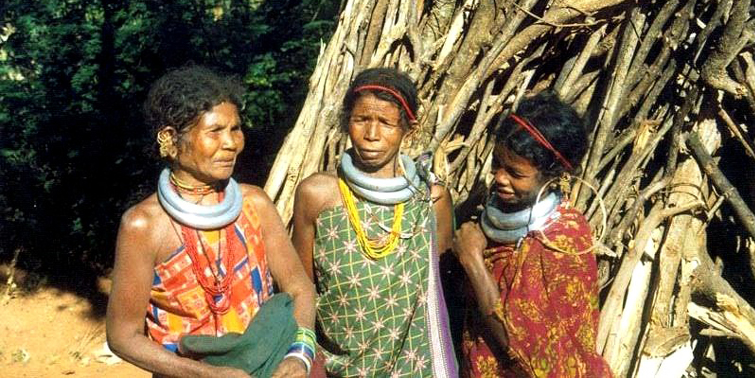
Known for their valor, the Gond tribes are mostly found in Central India in the Chhindwara district of Madhya Pradesh. They are also spotted in the Bastar district of Chhattisgarh, parts of Maharashtra, Andhra Pradesh, and Orissa. So when you are on a tour in Madhya Pradesh, muttering and mulling over the titillating sculptures of Khajuraho and Sanchi Stupa respectively and wheeling from majestic palaces to whispering woods of Kanha and Bandhavgarh, steer towards the Gondi forest and experience the unique lifestyle of the Gonds. The Gond tribes have a good command over Telgu, Hindi, Marathi, Parsi and many other Dravadian languages.
What to experience? The rural colour with mud walls and thatched roof houses, earthen pots, traditional wears – men in dhoti and women in sari and ornaments, the festivals of Keslapur Jathra and Madai and ritual performances are the ones to experience. Try out Kodo or Kutki, which is the staple food of the Gonds; moreover, they are mostly meat consumers.
2. Bhils Tribes
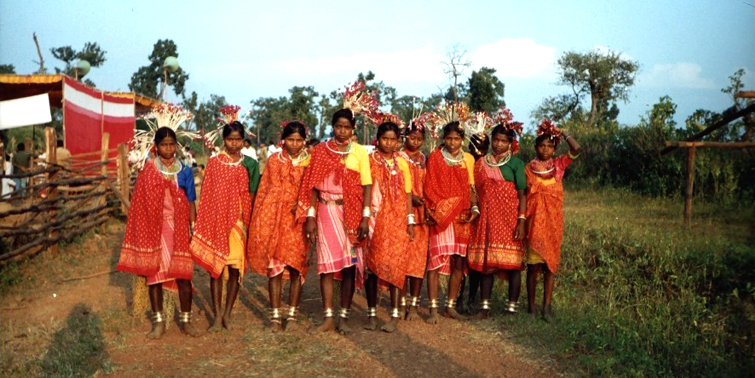
If you are on your royal wheels for a trip to Rajasthan, moving from massive forts and palaces to Jain temples, then discovering the lifestyle of the Bhil tribes is an absolute contrast. This tribal community in India is mostly spotted in the Aravali Ranges of Sirohi in Udaipur and some places of Dungarpur and Banswara districts of Rajasthan. Further, the settlements of the Bhil tribes are also found in parts of Gujarat, Madhya Pradesh, Maharashtra and Tripura. What to experience? The cultural harmony – Ghoomar dance, Than Gair (a religious dance and drama) are Baneshwar Fair that is held in the month of January or February are the major attractions. Whereas the Bhili language, which is an Indo – Aryan language, is one of the most interesting features to experience.
3. Santhal Tribes
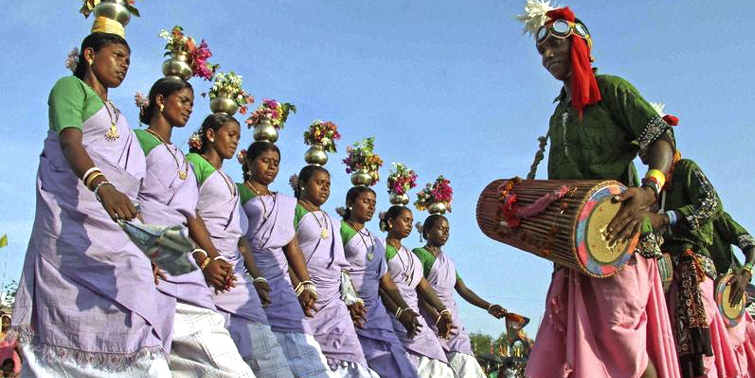
The Santhal tribes are the major tribes of West Bengal and are mostly seen in the districts of Bankura and Purulia. They are also widely seen in parts of Bihar, Jharkhand, Odisha and Assam. The journey to the abode of Santhals heads from the cultural capital of India, Kolkata, en route the terracotta temples of Bishnupur and Bolpur. The Santhals are largely dependent on agriculture and livestock; further, they are well versed in the art of hunting. What to experience? The Santhali dance and music is one of the major attractions that you can’t miss when you are wheeling to Bankura and Purulia. Moreover, festivals like Karam, Maghe, Baba Bonga, Sahrai, Ero, Asaria, Disum Sendra and Namah often fascinate travellers.
4. Great Andamanese Tribes
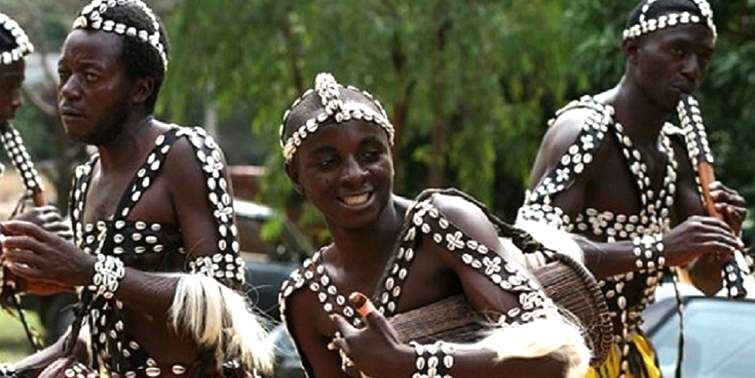
Back in 2010 when Boa (one of the speakers of two Great Andamanese languages, Khora and Bo) died, the world lost two languages. So before the extermination of these unique tribes, speaking Jeru and Sare, plan an ocean cruise to Andaman and explore the indigenous survival land. The Great Andamanese Tribe, which includes the Onge, Jarawa, Jangil and Sentinelese, are said to be the first inhabitants of the islands. But today a significant number is on its way to extinction. Nonetheless, the left over population of the Great Andamanese are largely dependent on the vigorous campaign by Survival and Indian organizations. What to experience? Well, it is hard to distinguish them by their appearance – complexion and dress, still you are another traveller who will end up capturing their lifestyle. The Great Andamanese are mostly spotted in Strait Island and parts of Rutland Island.
5. Khasi Tribes
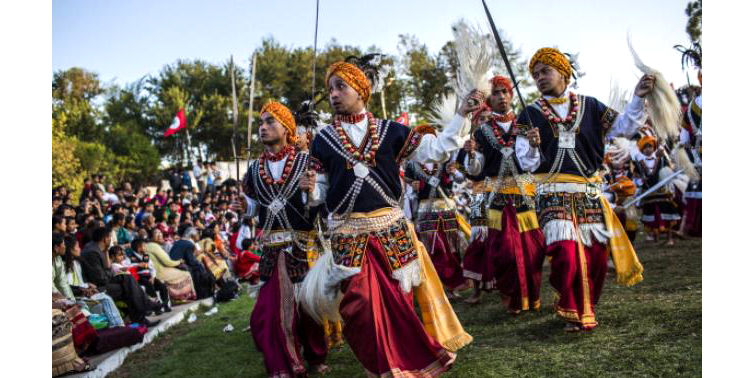
If you are seeking to discover the culture hidden in the mystical mountains of Meghalaya, the ethnical clamour of the Khasi tribes, who are filled with lots of music, playing musical instruments like drums, guitars, flutes, wooden pipes and metal cymbals, surely going to make your tour to Meghalaya bright and striking. The Khasi tribes are mostly spotted in the Khasi Hills of Meghalaya and are also found in parts of Assam, Arunachal Pradesh, Manipur and West Bengal. What to experience? Other than the language, which is an Austro-Asiatic language AND dress – Jainsem for women and Jymphong for men, the five day long extravaganza, the Nongkrem festival is a feast for travellers’ eyes.
6. Garo Tribes
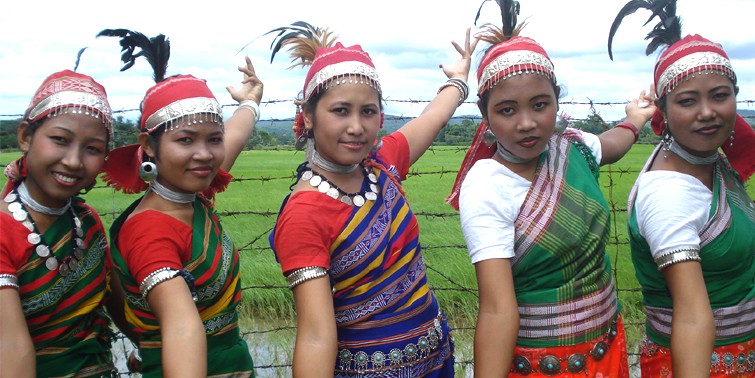
One of the few remaining matrilineal societies in the world that are mostly spotted in the hills of Meghalaya, the Garo Tribes are ideally known for their vivid lifestyle. They are also spotted in the neighbouring areas of Bangladesh and parts of West Bengal, Assam and Nagaland. It is easy to distinguish the Garo tribes from other tribes of Meghalaya. Women are often found in varieties of traditional ornaments, whereas men are seen wearing turbans with feathers stuck behind them. What else to experience? The unique form of Garo architecture like Nokmong, Nokpante, Jamsireng and Jamadaal are some abstract capture in your lense. Further, the Wangala festival of Asanang is something that you can’t miss.
7. Angami Tribes
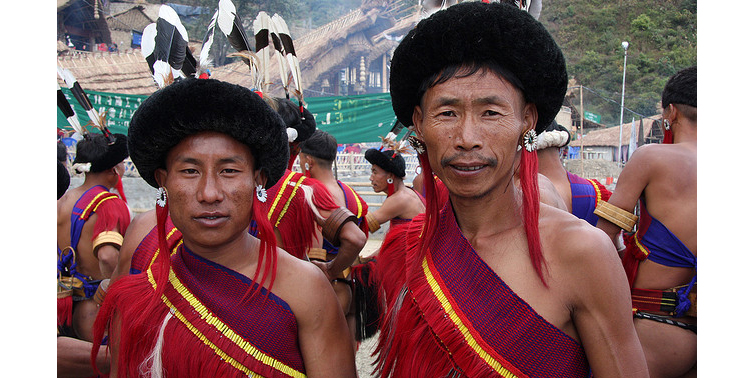
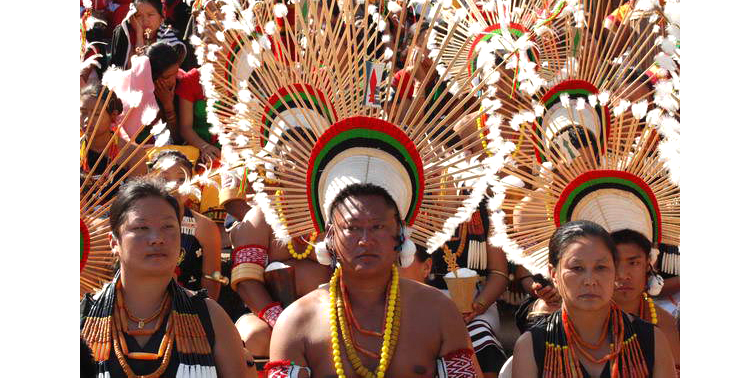
It’s the famous Hornbill Festival of the Angami Naga tribes that pulls in travellers to the farthest corner of North East India, Nagaland. The Angami Nagas are one of the major tribes of Nagaland, widely present in the district of Kohima. Apart from the Hornbill Festival, the major attraction remains their intricate and beautiful woodcraft and artwork. The Angami Nagas are known for the producer of bamboo work, cane furniture, beds, shawls and powerful machetes. What else to experience? The form of language, the Angami Language that is identified with different names such as Gnamei, Ngami, Tsoghami, and Monr, is another major feature to get hold off. Further, their dressing style – men in white Mhoushu and black Lohe and women in Mechala along with ornaments like Beads, miniature mask pendants, bangles and bracelets – is surely going to arrest your eyes. Well, the hardcore carnivore travellers may try out some unique pork dishes from the Angami.
8. Munda Tribes
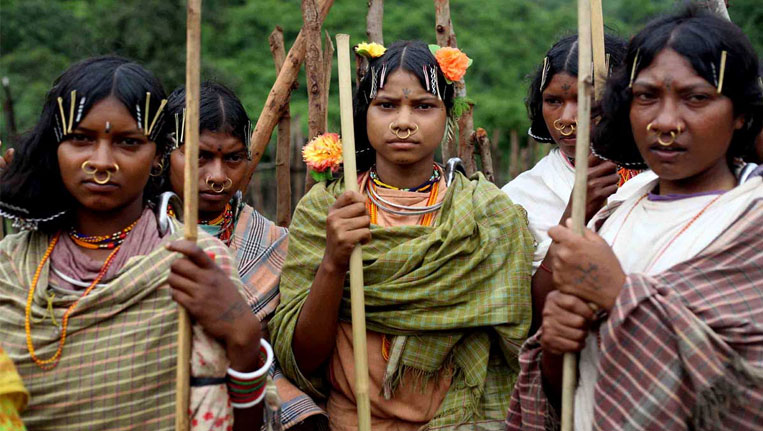
Don’t miss the Nupur dance when you are in the abode of the Munda tribes. Their settlement is largely based in the Chota Nagpur Plateau region and is mostly spotted in the dense of Jharkhand. Further, parts of West Bengal, Chhattisgarh, Bihar, Odisha are also inhabited by the Munda Tribes. Amidst the vast eco sphere, these Munda tribes display a simple and basic lifestyle that follows the Sarna religion, believing in a God called Singbonga. What to experience? Mage, Phagu, Karam and Sarhul are the major festivals of the Munda tribes that attract travellers from different parts of the world. Further, the Killi language is also another major feature to get hold off.
9. Bhutia Tribes
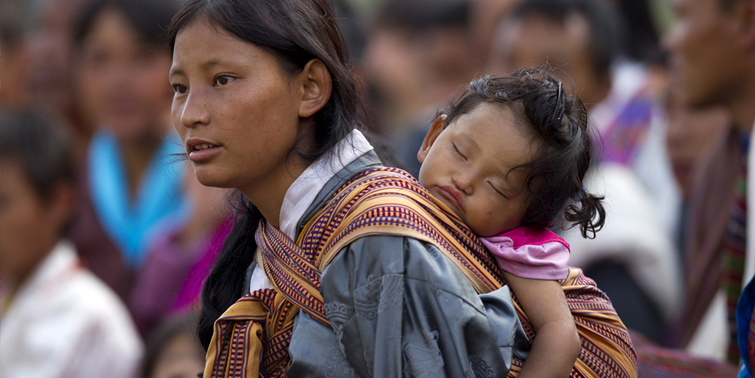
Dominating the landlocked territory of Sikkim that is bordered by the Indian Himalaya, the Bhutias are widely known for their traditional grandeur, art and cuisine. One cannot forget the unique preparation of momo, steamed meat dumplings and thukpa, slurpy, burpy and yummy! Travel into the land of the Bhutias during the Losar and Loosong festival and experience the vivid culture – dance, music and religion. The hardcore carnivores can try out some spicy beef.
10. Chenchu Tribes
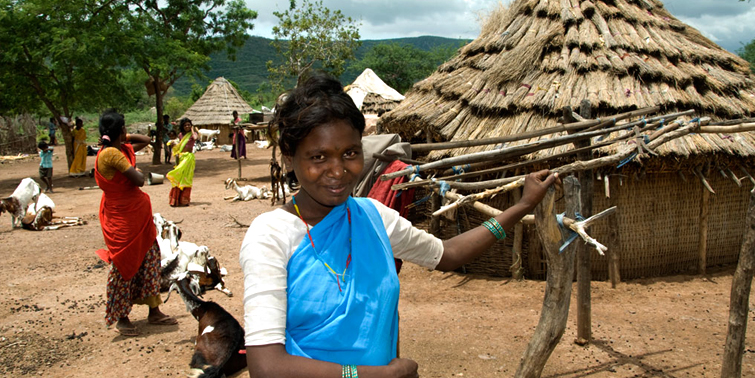
The Chenchu tribes are one of the indigenous people of Andhra Pradesh inhabiting over the years in the midst of the forest of Nallamala Hills. They are mostly seen in the districts of Mahboobnagar, Nalgonda, Prakasam, Guntur and Kurnool. Life is hard for them as they are largely dependent on hunting and trading jungle products like roots, tubers, fruits, beedi leaves, mahua flower, honey, gum, tamarind and green leaves. What to experience? Well, other than the languages having Telegu accent, they are skilled in various form of arts and crafts. Further, the Chenchu tribes are extremely ritualistic. Their ritual performances of various gods and goddesses are the major attractions for travellers.
11. Kodava Tribes
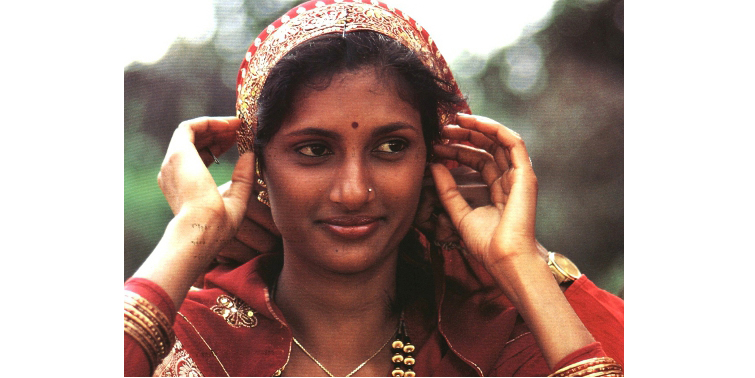
So, when you steer onto the Mysore – Madikeri Road from Mysore, you are slowly heading to the abode of one of the distinct race in India, the Kodava tribes, known for their bravery since ages. Coorg, flourishing as one of the eco – tourist destinations in India, attracts lot of weekenders from nearby cities of Karnataka and travellers from different parts of the country and world, BUT the harmony and ethnicity of the Kodava tribes is one of the major attractions for the explorers. Digging into the cultural diorama, the Kodava tribes are fond of music and dance. One can witness such hues during the festivals of Puttari, Kaveri Sankramana and Kailpodhu. Moreover, these people are also passionate about hockey with both men and women playing the game. If you want to seek such a playful panorama then be there during the Kodava Hockey Festival, which is held every year.
12. Toto Tribes

One of the isolated tribal groups inhabiting the village of Totopara in Jalpaiguri district of West Bengal is the Toto tribes. They have a simple lifestyle and are largely dependent on trading vegetables and fruits. In spite of the fact that they define themselves as Hindus, the Totos are believers of god Ishpa and goddess Cheima. If you are wheeling to Totopara during the peak winter season, then steer to Jaldapara National Park, which is one of the popular national parks in India that is located approximately 20 kilometers from Totopara. Don’t forget to try out Eu, which is a type of country liquor made from fermented marua, rice powder and malt and is served warm in Poipa (wooden glass).
13. Irulas Tribes
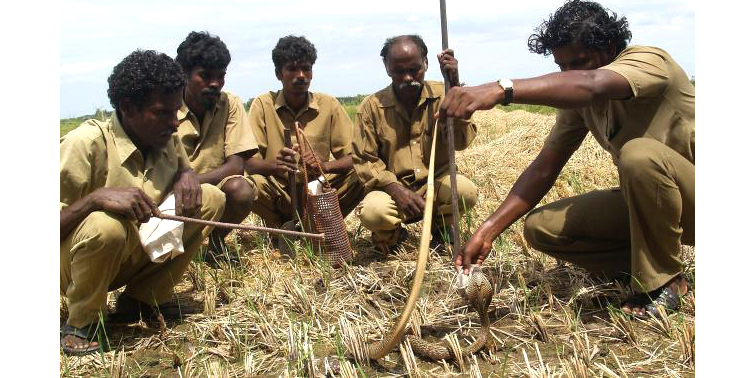
Expert snake and rat catchers, that’s what make the Irula tribes of South India special. With a population of approximately 3,00,000 the Irulas inhabits parts of Tamil Nadu, Karnataka, Andhra Pradesh and Kerala. Moreover, the Irulas are the second largest tribe in Kerala and is mostly seen in the district of Palakkad. So, when you are on a holiday in Kerala to enjoy the sprawling hues of the Nilgiri Mountains and cruise down the sparkling backwaters of Alleppey, just for a day steer to Palakkad. What to experience? The Irulas are largely dependent on agricultural products like paddy, raggi, dhal, plantains, chilies, and turmeric. Further, the major attraction remains their varied ritual performances. All though most of them are Hindus but they still believe in worshiping their own diety, Irulas are also known to be conversant in white and black magic.
14. Nyishi Tribes
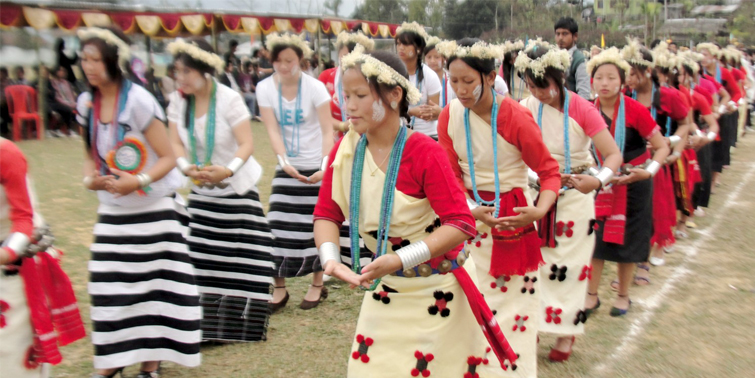
The Nyishi tribes are the largest inhabitants of the mountainous state of Arunachal Pradesh and are mostly spotted in the districts of Papum Pare, Lower Subansiri, Kurung Kumey, East Kameng, parts of Upper Subansiri. Whilst a majority of them have converted to Christian, their religion still involves a belief in spirits associated with nature. What to experience? The Nyokum Festival, which is dedicated to goddess Nyokum, held in the month of February, is a major attraction where you as a traveller can seek the interesting cultural heritage and ethnicity of the Nyishi tribes.
15. Bodo Tribes
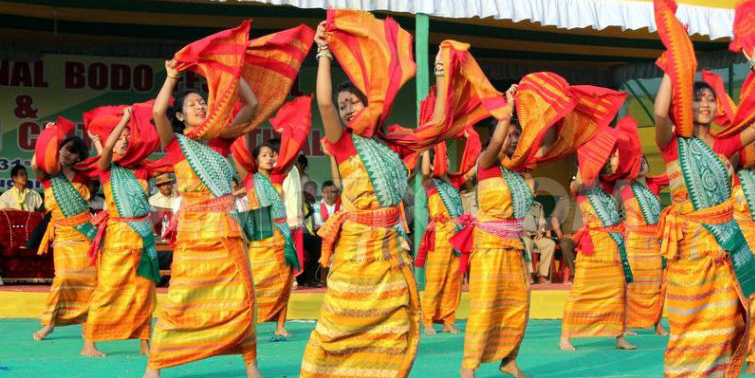
Believed to be the early settlers of Assam, the Bodo tribes today are found in Udalguri and Kokrajhar of Assam and parts of West Bengal and Nagaland. If you are keen to seek the traditional colours of the Bodo people, then travel to North East during the time of the Baishagu Festival, dedicated to Lord Shiva (locally known as Bathou), which is celebrated during the spring season every year. Further, the Bodo tribes are meat – eating people and hence MY FELLOW NON – VEG travellers, just wake up the carnivorous nature in you and try out some unique preparation of pork and fish. What else to experience? Weaving is one of the most intrinsic part of Bodo culture and hence you can buy some handloom products.
16. Warli Tribes
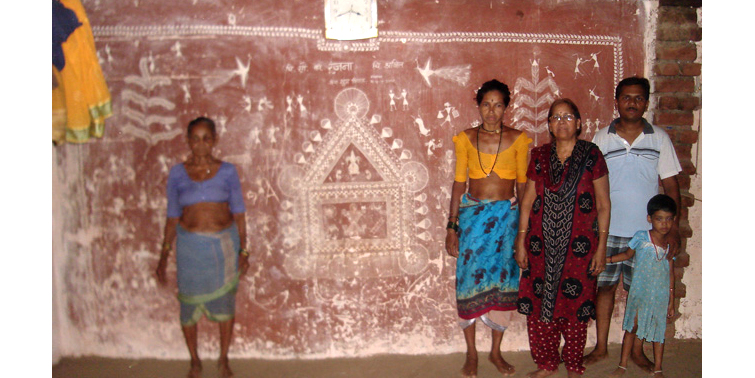
The Warli or Varli tribes of Maharashtra and Gujarat display a unique form of art and painting that reflects the mural paintings of 500 – 10,000 BC carved in the Rock Shelters of Bhimbetka in Madhya Pradesh. Their form of art follows the rudimentary technique with mixture of earth and cow dung, branches, red ochre, rice paste, bamboo stick and more. If you want to seek such grandeur then visit during the Warli Folk Art Dancing People Festival, which is held during the month of March every year. Well, don’t miss the Tarpa Dance, which is a folk dance performed during the harvest season.
17. Toda Tribes
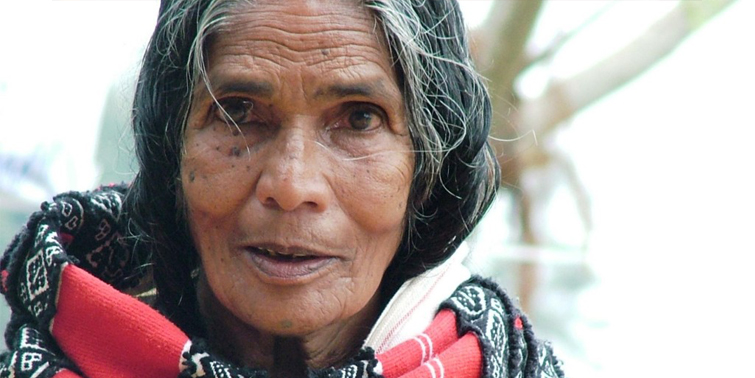
Dominating parts of the Nilgiri Mountains, the Toda tribes are largely dependent on cattle-herding and dairy-work. They are also skilled in art and architectural works like embroidery products and dogles, type of oval and pent – shaped huts made of bamboo canes and thatched roof. If you are travelling to Ooty, which is one of the popular hill stations in South India, you will come across several such Toda huts as well as people inhabiting the area.
18. Kurumban Tribes
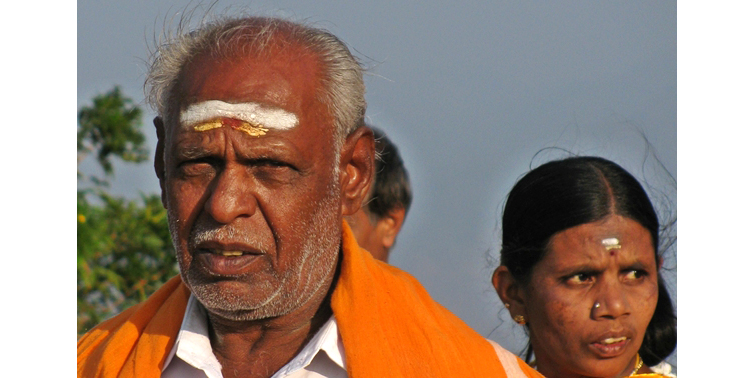
Another major tribe dominating parts of Kerala and Tamil Nadu, the Kurumban tribe exhibits a simple lifestyle, depending largely on agricultural products. Moreover, they are widely known for witch-craft and magical performances as well as traditional herbal medicines.
19. Soliga Tribes
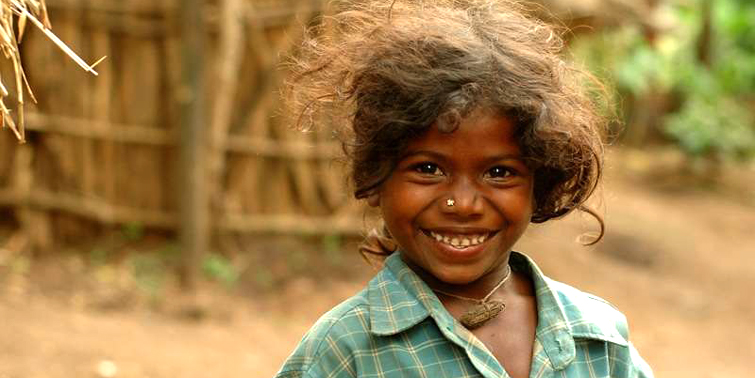
Inhabiting the dense forest of BR Hills of Karnataka and Tamil Nadu, the Soliga tribes are yet another indigenous group of people, further divided to five sub groups – Male Soliga, Urali Soliga, Pujari, Kadu and Burude. Even if you steer your wheels towards Bandipur National Park, you may chance upon the Kadu Soliga tribes and hence can experience little bit of their lifestyle.
20. Siddis Tribes
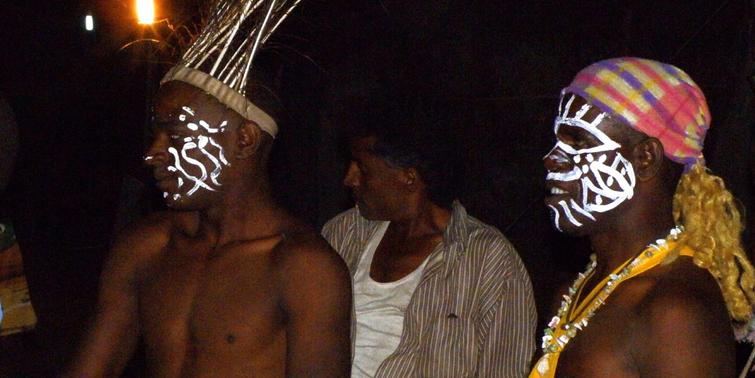
The Siddi tribes of Karnataka are believed to have descended from the Bantu people of Southeast Africa who were treated as slaves by Portuguese merchants. Today, the Siddi people are predominantly found around Yellapur, Haliyal, Ankola, Joida, Mundgod, Sirsi, Belgaum and Dharwad in Karnataka apart from some pockets of Pakistan. The Siddi people are mostly Roman Catholic but some follow Hinduism and Islam. What to experience? Other than mulling over their historical facts, the major attraction remains the ritual practices, dance and music.
Published: 15 May, 2014
Brought up from the cultural capital of India, Kolkata, Swairik Das is a passionate traveller who seeks to travel and explore the length and breadth of the country. He is also a dedicated travel writer, blogger and photographer who by heart is also an adventure freak. His focus is mostly into exploring and writing on trekking, jungle safaris and several adventure activities; religion, festival, heritage, people and cuisine.



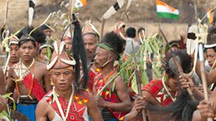 11 Nights / 12 Days
11 Nights / 12 Days 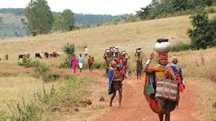 15 Nights / 16 Days
15 Nights / 16 Days 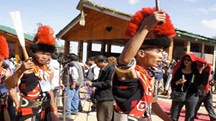 13 Nights / 14 Days
13 Nights / 14 Days 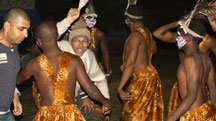 12 Nights / 13 Days
12 Nights / 13 Days 




















